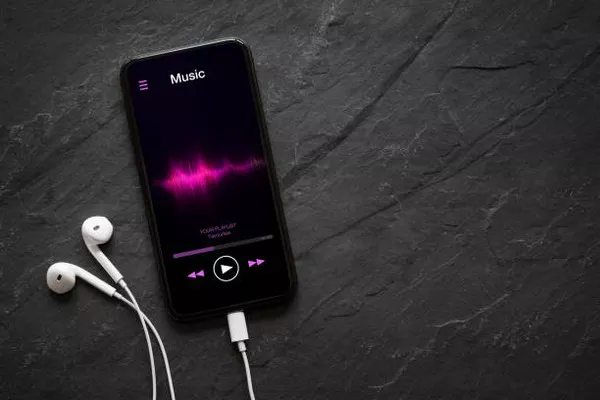Music, an art form deeply intertwined with human culture, has undergone a remarkable evolution throughout history. The quest to pinpoint the precise moment when music gained widespread popularity is as intriguing as it is complex. From ancient rhythms to modern-day streaming platforms, the journey of music’s ascent to popularity is multifaceted, marked by cultural, technological, and societal revolutions.
Ancient Origins: The Roots of Musical Expression
Tracing the origins of music’s popularity leads us back to ancient civilizations. Music, in its primal form, existed within human societies for millennia, serving diverse purposes. Anthropological evidence suggests that music was intertwined with rituals, ceremonies, and communal gatherings in prehistoric times. The rhythmic beats of drums, chants, and primitive instruments resonated within early communities, laying the groundwork for a shared musical experience.
In ancient Mesopotamia, around 2000 BCE, music began to emerge as a structured art form. Sumerians developed intricate musical systems, using notations on clay tablets, elevating music from an informal communal activity to a structured practice. The popularity of music burgeoned as it became associated with religious rituals and cultural celebrations, marking its gradual integration into societal life.
Medieval and Renaissance: Music in the Service of the Church
The medieval and Renaissance eras witnessed a significant transformation in music’s popularity, particularly in Europe. During the Middle Ages, music became intricately linked with religious practices, dominating the Church’s rituals. Gregorian chants and sacred compositions proliferated, captivating audiences within ecclesiastical settings. The monophonic nature of medieval music set the stage for polyphony in the Renaissance era, fostering complex harmonies and diversified musical expressions.
By the 15th and 16th centuries, the Renaissance heralded an era of flourishing artistic endeavors, marking a shift in music’s popularity from purely religious contexts to secular settings. The advent of printing technology enabled the dissemination of musical manuscripts, broadening access to compositions beyond the confines of the Church, thereby contributing to music’s growing popularity among the general populace.
The Age of Enlightenment: Music Enters the Public Sphere
The 18th century, known as the Age of Enlightenment, witnessed a pivotal moment in music’s popularity as it transcended aristocratic courts and ecclesiastical institutions to reach a wider audience. The emergence of public concerts and the rise of the bourgeoisie facilitated a cultural shift, enabling music to break free from exclusive domains. Composers like Mozart, Beethoven, and Haydn became synonymous with this period, captivating audiences with their compositions.
The proliferation of sheet music and the establishment of public concert halls marked a democratization of music, making it accessible to a burgeoning middle-class audience. This period saw the genesis of symphonies, operas, and sonatas, solidifying music’s place in public consciousness and contributing significantly to its widespread popularity.
Industrial Revolution to the 20th Century: Technological Advancements and Mass Media
The advent of the Industrial Revolution and subsequent technological advancements revolutionized music’s accessibility and reach. The invention of the phonograph by Thomas Edison in the late 19th century marked a watershed moment, allowing recorded music to be mass-produced and distributed. This innovation laid the groundwork for the emergence of the music industry, altering the landscape of music consumption.
The 20th century witnessed an unprecedented surge in music’s popularity, propelled by radio broadcasting, sound recording technologies, and the rise of iconic musical genres like jazz, blues, rock ‘n’ roll, and pop. The proliferation of radio broadcasts allowed music to transcend geographical boundaries, enabling artists to gain global recognition. The introduction of vinyl records, followed by cassette tapes, CDs, and digital downloads, further facilitated the dissemination of music, catering to diverse audience preferences.
The Digital Age: Music in the Era of Streaming
The dawn of the 21st century ushered in the digital age, transforming the music industry in profound ways. The advent of the internet and digital technologies revolutionized music consumption and distribution. The emergence of online platforms like Napster, iTunes, and eventually streaming services such as Spotify and Apple Music revolutionized how audiences access and engage with music.
Streaming platforms have democratized music consumption, offering vast libraries of songs accessible at the tap of a screen. Personalized playlists, recommendation algorithms, and on-demand streaming have reshaped the music landscape, contributing to its unprecedented popularity. Social media platforms have also played a pivotal role in amplifying the reach of artists, enabling them to engage directly with their fan base and cultivate a global following.
Conclusion: The Ever-Evolving Popularity of Music
In the quest to ascertain when music became popular, one realizes that its evolution is a nuanced tapestry woven through centuries of cultural, technological, and societal changes. From its humble origins in communal rituals to its current ubiquity facilitated by digital advancements, music’s popularity has been a testament to its ability to adapt and resonate with diverse audiences across time.
The journey of music’s popularity is an ongoing narrative, shaped by innovation, cultural shifts, and the dynamic interplay between creators and consumers. As we navigate an increasingly interconnected world, the trajectory of music’s popularity continues to evolve, transcending boundaries and resonating profoundly within the hearts and souls of people worldwide. Whether it’s the ancient rhythms echoing through millennia or the latest chart-topping hits streaming across digital platforms, the allure of music remains timeless, transcending barriers and binding humanity together through its universal language.
























